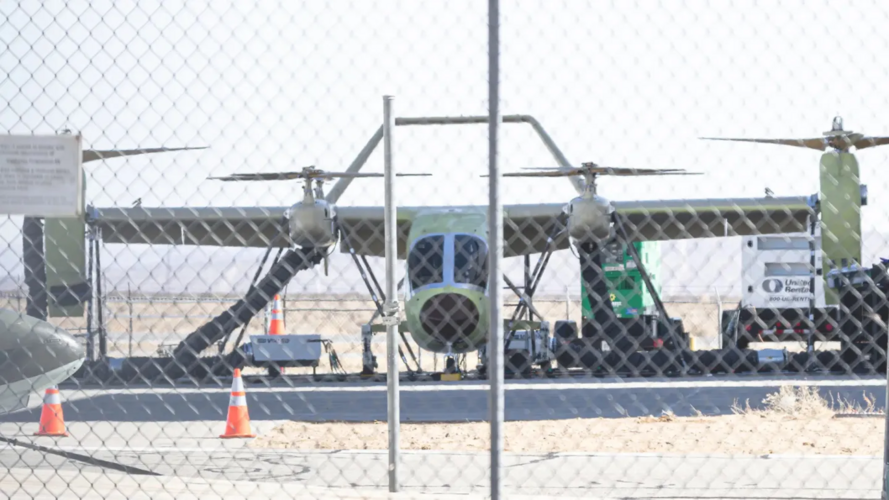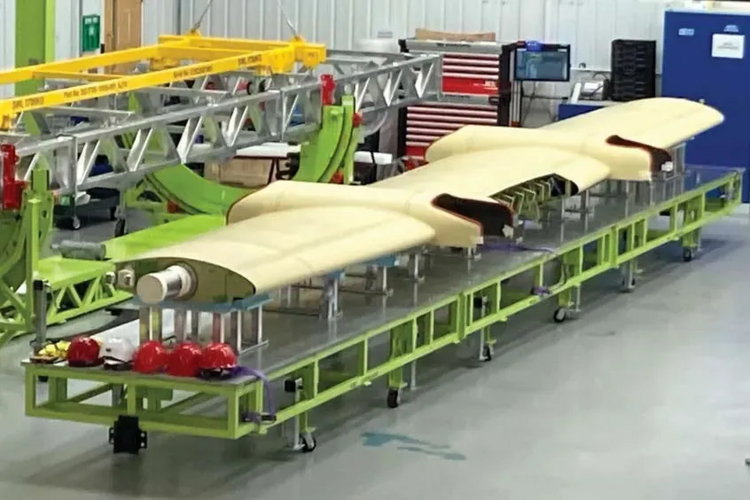I posted this (below) at
https://www.secretprojects.co.uk/threads/textron-eaviation-inc-nexus-evtol.45388/
I am going to make a wild prognostication here.
The Mojave Mystery VTOL is a hybrid electric/turbine demonstrator light cargo aircraft being developed at AFWERX behest to investigate VTOL platforms for its expeditionary fighting concepts. A follow on from their investigations with the EVTOL the last couple of years. The tail assembly speaks to a rear ramp that will allow small(er) forklifts to on and offload pallets. Since it is a demonstrator, the fuselage does not have to actually fit pallets, especially since it is likely full of test instrumentation. The four electric driven rotors for VTOL takeoff and landing are comparatively light weight and like Beta's Alia, able to be stowed with aerodynamic efficiency, although the picture makes the rotors look less drag efficient. They should also add to efficient STOL take off, when possible, to reduce fuel burn on takeoff. Given the full-length flaps seen in the pictures the aircraft should be able to do very short landings too, if carrying larger loads. The relatively simple tricycle landing gear are sufficient for demonstration to keep cost down. It is not too hard to see sponsons with fuel or other additional space for retractable gear if the program continues.
Now for the real wild part. Tilt rotor is not a simple engineering effort. An electric tilt rotor is even more specialized. There is, to my knowledge only one aircraft engineering company who has done an all-electric (other than the turbine propulsion itself) VTOL cargo aircraft in the past. Karem Aerospace. So, I think they might be involved. I might also throw BETA Technologies into the mix as they have experience with transition from VTOL propulsion to powered. BETA has mentioned working on hybrid as well.
Hope this experiment works. Love the idea.
To comment on
@Stargazer (s) analysis above, I agree that it could be another Rutan endeavor as they are most known for unconventional aircraft. However, they have to my knowledge, little to no experience with tilt rotor beyond initial concept work we have all seen. Karem has significant experience with tilt rotor aircraft, electrical components, EVTOL and they have teamed with NG on other projects. They are also a SOCAL based company, so it could be a joint endeavor. While it may draw some of the design from a glider, for aerodynamic efficiency, I would think a new wing would be needed to deal with the significant increase on weight at the end of each wing. The wing will likely experience significant torsion as well if the proprotor/nacelle at the end of the wings do house engines. I note that the 3 bladed(?) proprotors have a significantly wider cord (like those seen on Bell tilt rotor, so they are to my thinking the primary propulsors for wing born flight. Finally,
if this is as I suppose an AFWERX demonstrator I think this also points toward hybrid power as I think I recall that AFWERK has moved toward more hybrid approach from direct EVTOL solutions.
I think I have about ~33% chance of being close. But I am an optimist



aviationweek.com

 theaircurrent.com
theaircurrent.com




